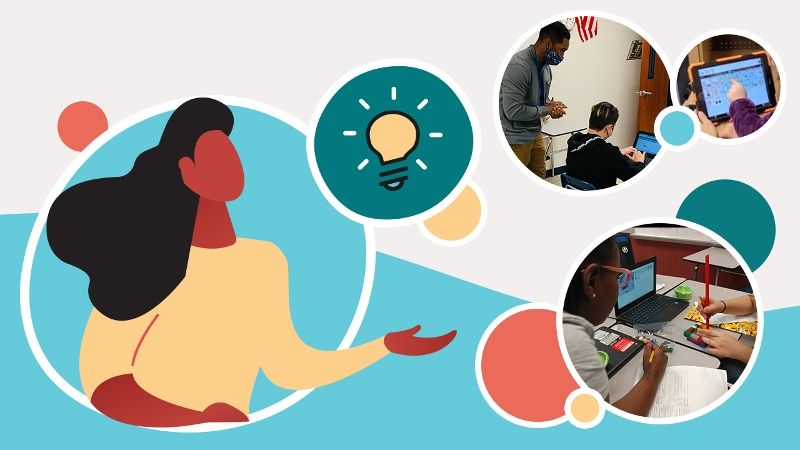Design Accessible Formative Assessment
Using data to inform instruction is an essential component of the teaching and learning process. Designing formative assessment protocols that are usable by all learners will ensure educators have the optimal information to inform that teaching and learning cycle.
Practice: Educators select and design accessible formative assessments and provide appropriate accommodations, so all students can demonstrate what they know and are able to do.
Actions that lead to designing accessible formative assessment include:
- Select accessible formative assessment tools: The district ensures educators have access to formative tools (e.g., apps or web-based) that are accessible to all students, including those who use assistive technology.
- Create accessible formative assessments: The district trains educators on how to create accessible formative assessments (e.g., using accessibility features built into word processing documents).
Learn From Our Partners

- Blog Post: Five Things AT Leaders Need to Know About Inclusive Technology Systemsexternal site, UDL Center
- Blog Post: Five Things EdTech Leaders Need to Know About Inclusive Technology Systemsexternal site, UDL Center
- Webinar Series: Learning with the Authors of Inclusive Learning 365, Center on Inclusive Technology in Education Systems (CITES) at CAST
- Case Story: BCSC | Columbus, INPDF document
Resources
- Formative Assessment for Students with Disabilitiesexternal site, Council of Chief State School Officers
- UDL Tips for Assessmentsexternal site, CAST
- Protocol for Creating Accessible OERexternal site, National Center on Accessible Educational Materials at CAST
Baltimore County's Story

Baltimore County Public Schools (Townson, Maryland)
Baltimore County Public Schools serves approximately 115,000 students in Baltimore, Maryland. BCPS began the shift to a 1:1 technology implementation model six years ago to achieve its vision for student learning—that learning should be driven by accessible instruction for all students. BCPS uses its learning management system and a variety of digital assessment tools to support data collection to personalize instruction. The district uses these assessments to provide teachers, administrators, and district leaders with real-time feedback on student performance toward learning goals. To ensure that all students can demonstrate what they know and understand, BCPS brings the UDL (Universal Design for Learning) approach to teaching and learning to the design of assessments, offering students multiple means to demonstrate proficiency and built-in accessibility features such as text to speech and options for recording audio responses. Leaders shared that they spend time working across teams to strategize for students who “live outside the access points” and explore how to engage and “pull in” students through adapted assessments and learning experiences to ensure that the depth of knowledge for all students in the district is accurately measured.
In shifting to these tools, BCPS devoted significant professional learning time to build teacher capacity in use of the available assessment tools and daily formative feedback to inform instructional design and practice. The Office of Digital Safety, Educational Technology & Library Media created a variety of professional learning options, including self-paced modules, large-group instruction, synchronous and asynchronous opportunities, and classroom-embedded coaching, to ensure that teachers have the skills to effectively evaluate student learning and provide constructive, timely, and relevant feedback. The district leaders shared that the Learning Management System (LMS) enabled them to see how students navigate through the curriculum in real time. The LMS has been a critical support for teachers in harnessing data to inform their instruction, including how to look at the whole data story—beginning, middle, and late-year—to help them better understand student learning needs and provide actionable feedback to learners. Interviewees underscored the criticality of immediate access to data: “It doesn’t help for teachers to get the data six months later; they need real-time/just-in-time access” to student data.
Read more about BCPS’s journey to an inclusive technology ecosystem: visit their case story in the Assessment Overview.
Supporting Research
- Clancy, M., & Gardner, J. (2017). Using digital portfolios to develop non-traditional domains in special education settings. International Journal of EPortfolio, 7(1), 93–100.
- Michaelson, K. J., Matz, L., & Morgan, D. (2015). Using a new electronic brailler to improve Braille learning at the Florida School for the deaf and blind. Journal of Visual Impairment & Blindness, 109(3), 226–231. https://doi.org/10.1177/0145482x1510900308external site
